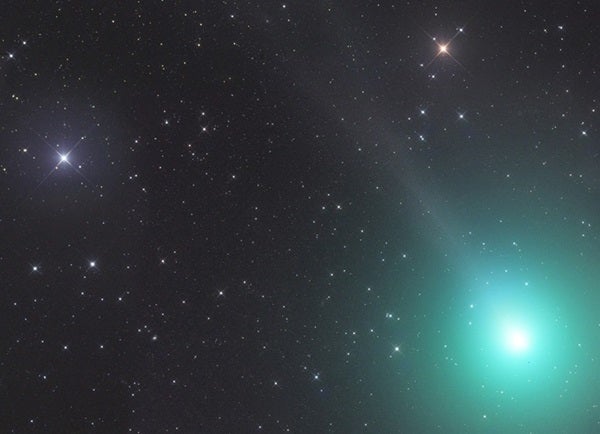The year’s brightest comet makes its closest approach to Earth this weekend, passing by one of the night sky’s most beautiful star clusters, the Pleiades, along the way.
Though Comet 46P/Wirtanen — the so-called Christmas comet — is not yet obvious to the naked eye in most places, it may already be visible under a clear sky located far from city lights.
This periodic visitor currently glows between 4th and 5th magnitude, which makes it an easy target for binoculars. From suburban skies, binoculars will reveal it as a fuzzy, green-blue object distinct from the pinpoint appearance of the background stars.
Comet 46P/Wirtanen made its closest approach to the Sun on Wednesday, December 12, and it will come closest to Earth on Sunday, December 16, when it swoops within 7.2 million miles (11.5 million kilometers) of our planet.
The comet has a period of 5.4 years and was initially a target for the Rosetta spacecraft until a launch delay made a new target necessary — Comet 67P/Churyumov-Gerasimenko.
American astronomer Carl Alvar Wirtanen discovered Comet 46P/Wirtanen on a photographic plate January 17, 1948, while carrying out stellar motion research at Lick Observatory.
This animation shows one hour of Comet 46P/Wirtanen’s motion on the night of December 9, 2018, when it was near the border separating the constellations Eridanus and Cetus.
Jamie Cooper of Dustin, England
Comet 46P/Wirtanen currently resides among the background stars of Taurus the Bull, between the magnificent Pleiades star cluster (M45) and the 1st-magnitude star Aldebaran. This area remains visible nearly all night, but climbs highest in late evening.
For more quick and easy observing tips, check out our weekly guide: The sky this week for December 14 to December 23.










